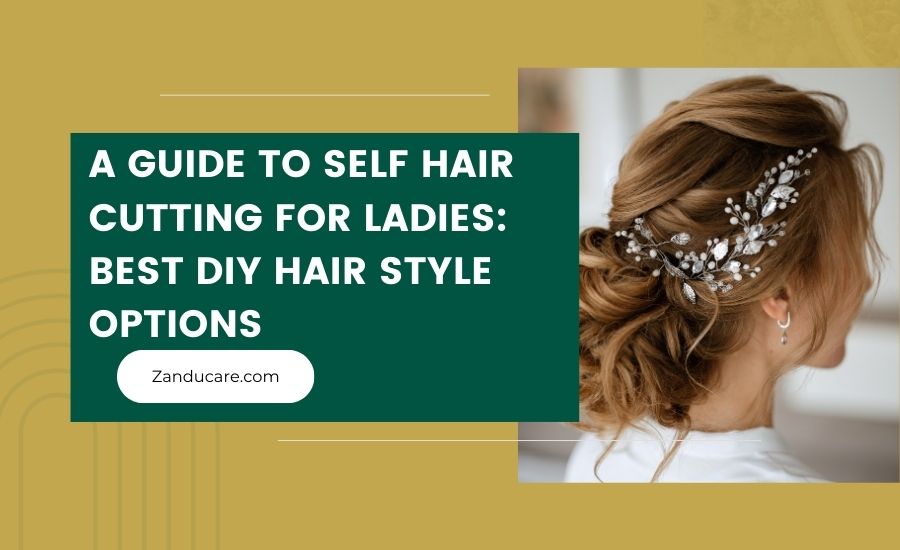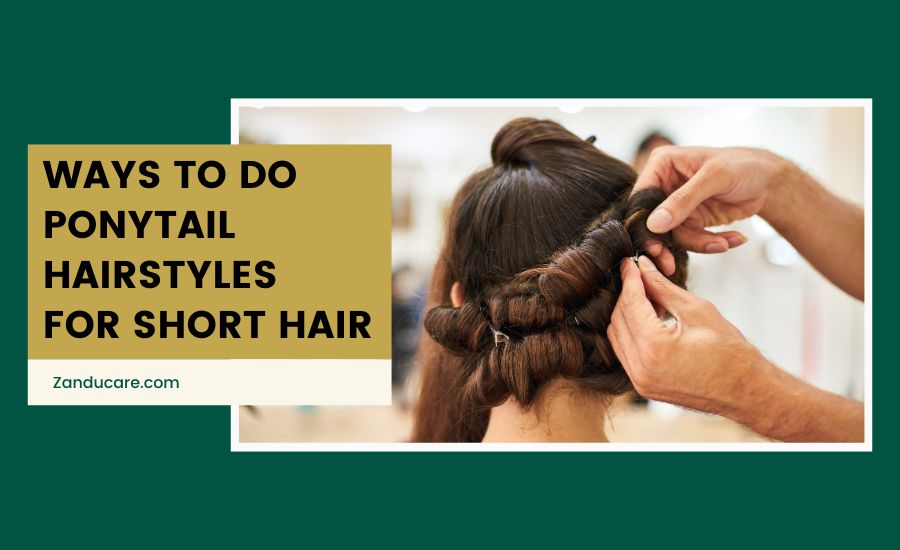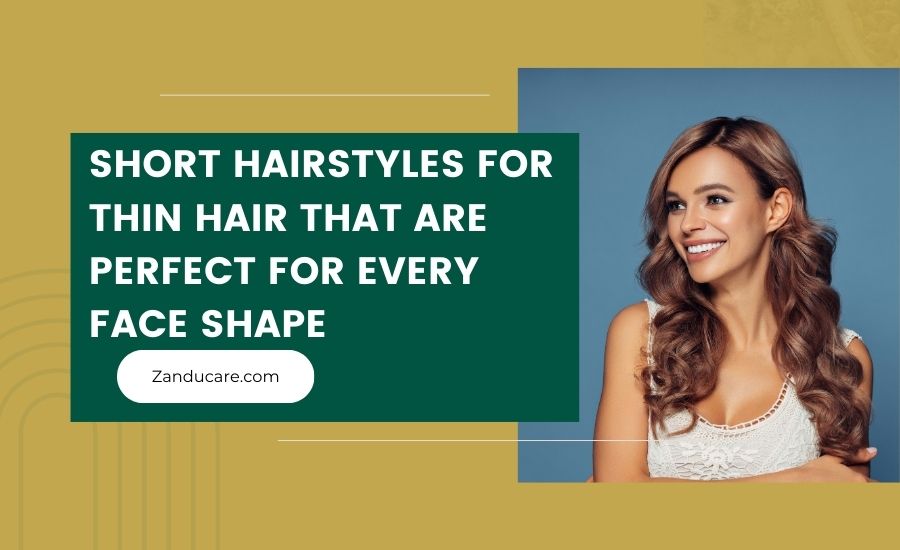Have you had enough of going to the salon just for a trim? Self-hair cutting for ladies has become popular as it offers convenience with creative freedom right from the comfort of home. If you want to change up your look, keep your current one, or even try something new, learning to cut your own hair can be a very empowering skill.
With the right tools and techniques, you can go from simple trims to trendy layers. In this complete guide, we will walk you through some of the easiest-to-manage DIY haircuts, the tools you will need, and step-by-step instructions for self hair cutting for ladies. Say goodbye to expensive salon visits, and hello to becoming your own personal hairstylist!
List of 10 Best Self-Hair-Cutting Styles for Ladies
While complex styles might still require professional expertise, having these basic hair-cutting skills in your arsenal can help you maintain your look between salon visits. Check out the most popular styles this season.
1. Classic Long Layers

Long layers will transform your one-length hair into a dynamic, movement-rich style. The first thing you should do is part your hair as normal and split it into neat parts using sectioning clips. Break work into little chunks and hold the hair at a 90-degree angle from your head. The ends are cut using a point-cutting technique (holding scissors vertically and snipping into the ends) for a softer finish.
Begin with longer layers and gradually decrease length if desired. For best results, ensure hair is slightly damp and use sharp professional shears. The "ponytail method" is particularly effective – gather all hair in a ponytail at the crown and cut straight across for foolproof layers.
Consider your hair texture when deciding layer placement—finer hair benefits from longer layers, while thick hair can handle shorter ones. This technique creates beautiful movement while maintaining overall length. Remember to section hair properly and work systematically for even results. It is perfect for beginners and suits most face shapes.
2. Face-Framing Layers

These flattering layers soften facial features and add dimension to any hairstyle. Begin with freshly washed, damp hair for maximum control. Part your hair down the middle and bring forward the sections that frame your face. Start with small sections on each side, combing them straight down at a 45-degree angle from your face.
Begin cutting at chin level, point-cutting diagonally to create soft layers that cascade down. For more, start shorter near the chin and gradually lengthen as you work down. Use the "ghost layer" technique by cutting into the hair at an angle rather than straight across for a more natural blend. The key is maintaining symmetry – frequently check both sides in the mirror.
Take extra care around the temples and cheekbones, as these areas frame your features most prominently. Consider your face shape when deciding the shortest layer length – oval faces can handle any length, while round faces benefit from layers starting below the chin. This style works exceptionally well with both straight and wavy hair textures and can be customised to flatter your face shape.
3. Straight-Across Bangs

A classic style that can dramatically change your look. Start with clean, damp hair and create a triangular section at the front of your head, typically from the crown to each temple. The size of this triangle determines the thickness of your bangs – wider for fuller bangs and narrower for wispy ones. Comb the section forward and decide on your desired length, remembering that wet hair will shrink when dry.
Hold the hair between your fingers, ensuring even tension, and cut straight across just below your fingertips. For precision, use small, sharp scissors and make several small cuts rather than one big chop. When planning bang placement, consider your forehead shape and any cowlicks. For thicker bangs, take a wider triangle; for wispy bangs, use a smaller section.
Always cut longer than intended initially – you can trim more if needed. Point-cut into the ends for a softer look, and avoid cutting too short. Style your bangs immediately after cutting to ensure they fall as desired.
4. Side-Swept Bangs

A versatile option that suits most face shapes and adds instant sophistication. Section off a triangle of hair at the front, similar to straight bangs but positioned slightly to your preferred side. Use sectioning clips to hold back the rest of your hair for better control.
Dampen the hair and comb it forward at a diagonal angle, considering your natural hair growth pattern and any cowlicks. Hold the hair between your fingers at your desired length, starting longer at the far side and gradually shortening toward the centre. Use the point-cutting technique to create a soft, graduated effect.
The longest pieces should hit around your cheekbone, while the shortest can blend into your existing layers. Consider your face shape when deciding the angle – steeper angles work well for round faces, while gentler angles suit longer faces.
Remember to account for hair texture – curly hair will appear shorter when dry. This style is particularly forgiving for beginners as it doesn't require a perfectly straight line and can be adjusted easily.
5. The Modern Bob

Create a chic, shoulder-length bob at home with this systematic approach. Start with damp hair parted down the middle for maximum control and precision. Section your hair into quadrants – two front sections and two back sections – using proper sectioning clips.
Begin cutting the back sections first, using the "ponytail method"—gather hair in a low ponytail at the nape and cut straight across at the desired length. For more precision, divide the back into smaller subsections and cut horizontally, using your first cut as a guide.
Release and check for evenness using multiple mirrors. For the front sections, comb hair straight down and cut at an angle, slightly longer in the front than the back, for a modern touch. Consider your neck length and face shape when deciding the angle – steeper angles elongate round faces, while subtle angles suit longer faces.
Pay special attention to the area around your ears to ensure a smooth transition. This creates a subtle angle that's flattering and easy to maintain. Remember to point-cut into the ends for a softer finish that's more forgiving of small imperfections.
6. The Textured Lob

A longer bob that offers versatility and style, perfect for those wanting a modern, low-maintenance cut. Section hair into four quadrants, securing each with professional sectioning clips. Starting at the back, take small vertical sections and point-cut into the ends for texture, holding the hair at a 45-degree angle.
Work systematically around the head, keeping the length between your collarbone and shoulders. Incorporate longer layers by holding small sections at varying angles and point-cutting for added dimension. The front pieces should be slightly longer than the back, creating a subtle angle that elongates the face.
Use the "slide-cutting" technique on the ends for additional texture – hold scissors parallel to the hair and gently slide down the last inch. Check for balance frequently using multiple mirrors. This cut works well with straight and wavy hair textures and forgives small imperfections. Style with texturising spray or sea salt spray to enhance the layered effect.
7. The Unicorn Cut

This trendy method for creating long layers has gained popularity for its unique approach. To ensure accuracy, begin with completely dry, straightened hair. Brush all hair forward and secure it in a tight ponytail at the centre of your forehead (like a unicorn horn), ensuring the hair lies flat against the head.
Check that the ponytail is centred and all hair is smooth – any bumps will result in uneven layers. Decide your desired layer length and cut straight across the ponytail using sharp shears. Make several small cuts rather than one big chop for more precise results. When released, this creates natural, even layers throughout your hair. The closer to the hairline you place the ponytail, the more dramatic the layers will be.
For more subtle layers, position the ponytail further back. This technique works best on straight to wavy hair and creates a beautiful, blended layer effect. It is perfect for those wanting to add movement without losing overall length.
8. The Shag-Inspired Cut

This layered style, making a huge comeback, creates a modern, textured look. Begin by sectioning hair into multiple horizontal layers, starting at the nape and securing each section with clips. Work with small sections, point-cutting into the ends at a steep angle to create texture. Use thinning shears sparingly for additional texture on thicker hair types.
Gradually work up the head, keeping layers shorter near the crown for volume. The key is to maintain a balance between choppy texture and overall shape. For face-framing pieces, cut shorter layers around the face, starting at chin length and blending into the rest of the cut.
Pay special attention to the crown area, as this creates the characteristic shag volume. Remember that this style works particularly well with wavy or curly hair as it embraces natural texture. Consider adding wispy bangs to complete the classic shag look.
9. The One-Length Trim

Looking for a sleek, professional look that you can maintain at home? The one-length trim is your perfect starting point for self hair cutting for ladies. This classic style works beautifully on straight or smoothed hair and creates a clean, polished appearance.
To achieve this look, start by washing and completely drying your hair. Part it down the middle and bring all hair forward over your shoulders. Using sharp hair-cutting scissors (never kitchen scissors!), make small, upward-pointing cuts into the ends rather than cutting straight across.
This technique, called point-cutting, prevents harsh lines. Work in small sections, using the first cut as your guide for length. Pro tip: Cut less than you think you need – you can always trim more, but you can't put it back! For extra precision, use hair-cutting clips to section your hair into manageable portions and regularly check both sides for evenness in your mirrors.
10. Curly Layers

Transform your curly mane into a perfectly shaped masterpiece with this DIY layering technique. The beauty of curly hair is that it's naturally forgiving when it comes to minor cutting imperfections. Start with well-moisturized, dry curly hair in its natural state – this ensures you're cutting your curls as they naturally fall.
Divide your hair into four sections: two in front and two in back. Working with one section at a time, twist your hair tightly (this creates natural layers as curls stack on each other). Holding the twist at a 90-degree angle from your head, trim the ends where you want the shortest layer to fall. Release the twist and shake out your curls.
The result? Beautifully bouncy, naturally layered curls that frame your face and remove bulk from your style. Remember to cut conservatively – curls spring up significantly when shortened!
Other Entrusting Guides:
- Best hair styles for women
- Best Indian hair cut ideas for women
- Trending front hair-cutting ideas for women
- Modern haircuts for round face women
Things To Consider For Self Hair Cutting For Ladies
Here are critical considerations before embarking on self hair cutting for ladies, ensuring you're well-prepared for your DIY styling journey:
- Tools and Equipment: Invest in professional-grade hair-cutting shears, as regular scissors can damage your hair and create split ends. Gather essential tools like sectioning clips, a spray bottle, wide and fine-toothed combs, and a quality hand mirror to check the back of your head.
- Environmental Setup: Choose a well-lit area with good ventilation and ample space to move around. Position yourself between two mirrors for better visibility of all angles, and ensure you have a comfortable chair at the right height to maintain good posture throughout the process.
- Hair Condition and Preparation: Work with freshly washed, slightly damp hair until you’re using the technique that calls for dry cutting. First, remove all tangles and knots beforehand, and then know how your hair grows naturally and its texture.
- Time and Patience: If you can, set aside plenty of time for your first attempt when you're not in a hurry to an important event. Keep in mind that professional stylists train for years to do their jobs properly, so be patient and realistic when it comes to your self-service.
Conclusion
Self hair cutting for ladies is more than just a way to save a few bucks – it's an expression and an experience of independence. Practice and patience, however, will help you learn to create DIYs, make your preferred hairstyle or even try new looks when the inspiration hits. When you start out, it’s smart to start small, buy quality tools, and always cut less than you think you’ll need — you can always trim more later. So grab your scissors, set up your mirror, and get started. Happy cutting!
FAQs on Self Hair Cutting For Ladies
1. What are the easiest hairstyles to cut at home?
A: The most manageable styles for beginners include straight-across bangs, long layers, bob trims, and face-framing pieces. Self hair cutting for ladies typically starts with these basic styles, as they require minimal sectioning and straight-cutting techniques.
2. How can I cut my own hair without ruining it?
A: Always start with clean, damp hair, use professional scissors, and cut less than planned. Work in small sections, use multiple mirrors for better visibility and follow tutorials specific to your desired style. Take frequent breaks to check evenness.
3. What should I use to cut my own hair at home?
A: Sharp hair-cutting shears, sectioning clips, a spray bottle, a fine-toothed comb, a wide-toothed comb, a hand mirror, and a cutting cape are essential tools. The results do make a difference with professional-grade tools.
4. Can I cut my hair layers myself?
A: Indeed, at home, you can make basic layers using methods like point cutting or ponytail. Work your way down from longer layers first; they’re more forgiving. The unicorn cut method is particularly popular for beginners.
5. What should I trim my hair at home?
A: Most women should trim their hair every 8-12 weeks to keep hair healthy and prevent split ends. But if you’re on a shorter style, you may find you’ll need to get trims more often, every 4-6 weeks.
6. What mistakes are we making when we cut our own hair?
A: Pitfalls are common, such as cutting hair too short the first time, using dull scissors, cutting dry hair, not sectioning correctly, and rushing. Cutting should be done when not stressed in a well-lit area.








